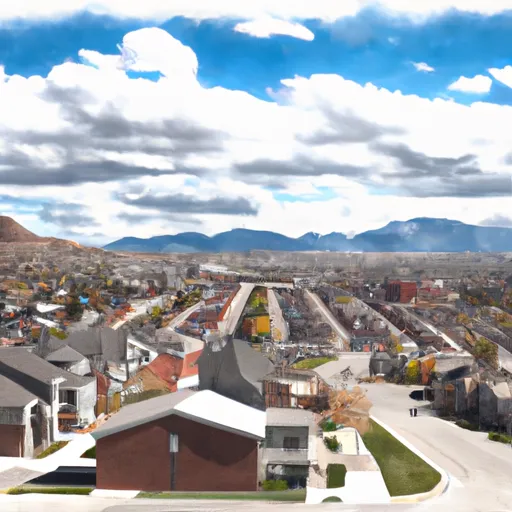-
 Snoflo Premium
Snoflo Premium
Get unlimited access to all our content
With no Ad interruptions! - Start Your Free Trial Login with existing account
Draper
Eden Index
Climate
9.6
•
Recreation
5.5
•
Community
5.1
•
Safeguard
7.0/10

Draper, Utah is a city located in the Salt Lake Valley with a semi-arid climate characterized by hot summers and cold winters. Average temperatures range from 33°F in winter to 85°F in summer, with occasional snowfall and high winds. The city is situated near the Jordan River and is home to several small creeks that contribute to its hydrology. The city's drinking water source is primarily from underground wells. Draper offers various outdoor recreational activities, including hiking in Corner Canyon, mountain biking in the Draper Bike Park, skiing at nearby resorts, and fishing and boating at nearby reservoirs such as Deer Creek and Jordanelle.
What is the Eden Index?
The Snoflo Eden Index serves as a comprehensive rating system for regions, evaluating their desirability through a holistic assessment of climate health, outdoor recreation opportunities, and natural disaster risk, acknowledging the profound impact of these factors on livability and well-being.
Climate Health Indicator (CHI): 9.6
Draper receives approximately
526mm of rain per year,
with humidity levels near 63%
and air temperatures averaging around
11°C.
Draper has a plant hardyness factor of
7, meaning
plants and agriculture in this region tend to thrive during the non-winter months.
By considering the ideal temperature range, reliable water supplies, clean air, and stable seasonal rain or snowpacks, the Climate Health Indicator (CHI) underscores the significance of a healthy climate as the foundation for quality living.
A healthy climate is paramount for ensuring a high quality of life and livability in a region, fostering both physical well-being and environmental harmony. This can be characterized by ideal temperatures, reliable access to water supplies, clean air, and consistent seasonal rain or snowpacks.
Weather Forecast
Streamflow Conditions
Jordan
Area Rivers
Jordan
Snowpack Depths
Jordan
Reservoir Storage Capacity
Jordan
Groundwater Levels
Recreational Opportunity Index (ROI): 5.5
The Recreational Opportunity Index (ROI) recognizes the value of outdoor recreational options, such as parks, hiking trails, camping sites, and fishing spots, while acknowledging that climate plays a pivotal role in ensuring the comfort and consistency of these experiences.
Access to outdoor recreational opportunities, encompassing activities such as parks, hiking, camping, and fishing, is crucial for overall well-being, and the climate plays a pivotal role in enabling and enhancing these experiences, ensuring that individuals can engage in nature-based activities comfortably and consistently.
Camping Areas
| Campground | Campsites | Reservations | Toilets | Showers | Elevation |
|---|---|---|---|---|---|
| Maple Bench | 10 | 5,997 ft | |||
| Little Mill | 36 | 6,035 ft | |||
| Maple Lake | 7 | 6,422 ft | |||
| Utah Lake State Park | 71 | 4,491 ft | |||
| Tanners Flat | 34 | 7,208 ft | |||
| Willow Park - Lehi | None | 4,493 ft |
Nearby Ski Areas
Catastrophe Safeguard Index (CSI):
The Catastrophe Safeguard Index (CSI) recognizes that natural disaster risk, encompassing floods, fires, hurricanes, and tornadoes, can drastically affect safety and the overall appeal of an area.
The level of natural disaster risk in a region significantly affects safety and the overall livability, with climate change amplifying these risks by potentially increasing the frequency and intensity of events like floods, fires, hurricanes, and tornadoes, thereby posing substantial challenges to community resilience and well-being.
Community Resilience Indicator (CRI): 5.1
The Community Resilience Indicator (CRI) recognizes that education, healthcare, and socioeconomics are crucial to the well-being of a region. The CRI acknowledges the profound impact of these elements on residents' overall quality of life. By evaluating educational resources, healthcare accessibility, and economic inclusivity, the index captures the essential aspects that contribute to a thriving community, fostering resident satisfaction, equity, and social cohesion.

